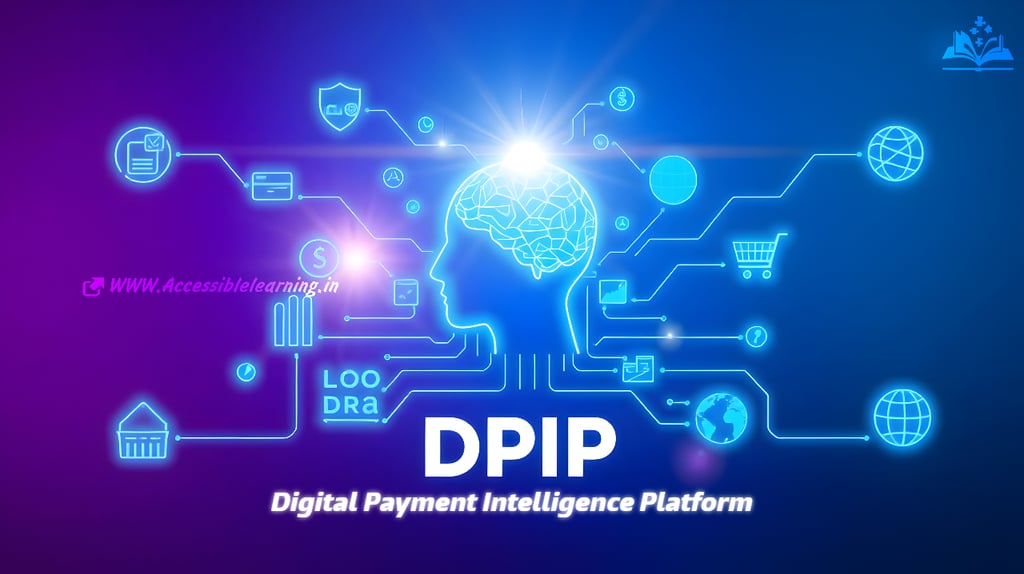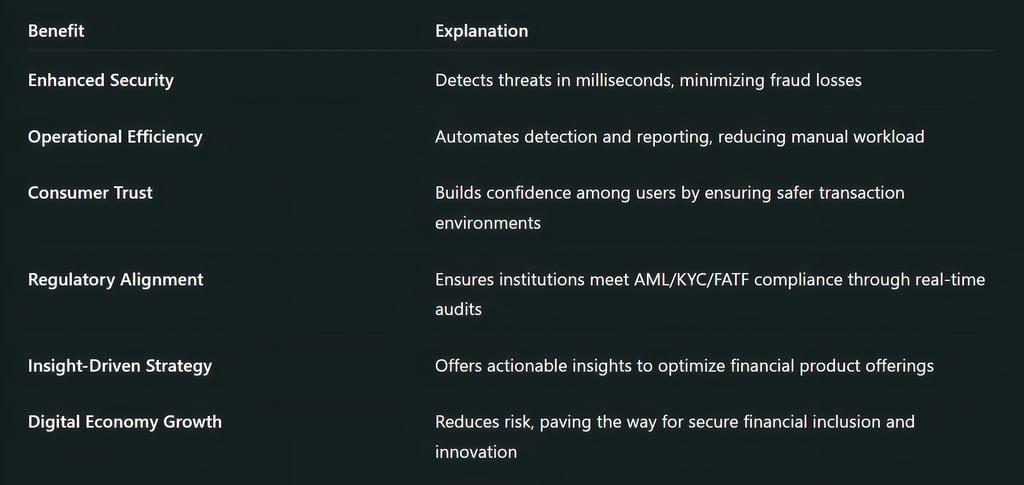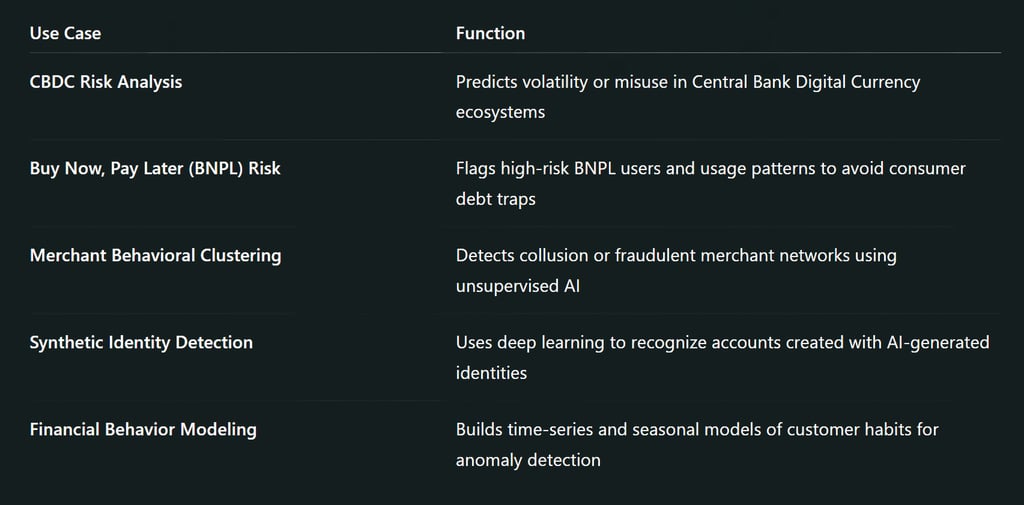
Digital Payment Intelligence Platform (DPIP): Revolutionizing Financial Transparency and Security
Discover how the Digital Payment Intelligence Platform (DPIP) is transforming the future of digital transactions through AI, fraud analytics, and real-time financial intelligence. Learn its features, benefits, use cases, and implementation challenges across banking, fintech, and governance sectors.
NEWS/CURRENT AFFAIRSSTOCK MARKETHARSH REALITY
Keshav Jha
6/26/20254 min read


The digital economy is evolving fast, with billions of digital transactions occurring daily across banking, e-commerce, fintech, and government sectors. This exponential growth brings with it challenges like fraud, financial crime, non-compliance, and lack of real-time insights. Enter the Digital Payment Intelligence Platform (DPIP)—a next-generation solution that leverages AI, big data, and real-time analytics to enhance payment visibility, fraud detection, compliance monitoring, and risk management.
What is a Digital Payment Intelligence Platform (DPIP)?
A Digital Payment Intelligence Platform (DPIP) is an AI-powered analytical framework designed to monitor, analyze, and secure digital payment ecosystems. It collects transaction data across digital channels (like UPI, IMPS, NEFT, wallets, and cards) and uses intelligent algorithms to:
Detect anomalies
Analyze user behavior
Identify fraud in real time
Provide data-driven insights to financial institutions and regulators
It’s a single-source payment surveillance tool developed to improve financial transparency, consumer protection, and systemic risk assessment.
Key Features of DPIP
Real-Time Transaction Monitoring
Monitors large volumes of financial transactions across digital payment channels for anomalies and red flags using AI/ML models.
Fraud Detection & Prevention
Uses behavioral analytics and predictive modeling to detect suspicious patterns such as spoofing, phishing, or mule accounts.
User Profiling & Risk Scoring
Profiles users based on past behaviors and assigns risk scores to transactions, helping identify high-risk actors before fraud occurs.
Data Integration Across Ecosystems
Aggregates data from banks, e-wallets, fintech apps, and payment gateways into a central intelligence hub.
Regulatory Compliance & Reporting
Provides dashboards, analytics, and reports to help institutions comply with KYC, AML, and regulatory requirements.
Anomaly Detection Engine
Identifies deviation from expected patterns using supervised and unsupervised learning models for deeper insights.
Technologies Powering DPIP
Artificial Intelligence & Machine Learning (AI/ML): For adaptive learning and real-time risk modeling
Big Data Analytics: To handle massive volumes of transaction data across diverse platforms
Cloud Computing: For scalability, faster deployment, and data accessibility
API Integration: Seamless data sharing with third-party apps, regulators, and financial networks
Blockchain (Optional Layer): For immutable record-keeping and traceability
Major Use Cases of DPIP
Banking Sector
Monitor high-frequency transfers
Prevent credit card fraud
Detect mule accounts
Fintech & UPI Platforms
Flag abnormal behavior (e.g., excessive UPI reversals)
Identify app misuse and merchant frauds
Regulatory Bodies (e.g., RBI, NPCI)
Oversee systemic transaction health
Alert on blacklisted accounts
Generate policy-grade reports
e-Commerce & Digital Retail
Ensure payment gateway safety
Reduce chargebacks and return frauds



Real-World Example: India’s DPIP by RBI
In early 2024, the Reserve Bank of India (RBI) proposed the development of a Digital Payments Intelligence Platform to oversee the country’s booming digital payments infrastructure. This centralized platform aims to:
Combat digital payment fraud
Improve interoperability of payment systems
Enable faster intervention in suspicious transactions
India’s DPIP is expected to become a model for global economies, especially in developing nations looking to build secure and scalable digital payment networks.
Challenges in Deploying DPIP
Data Privacy & Consent Management
Must comply with data protection laws like the DPDP Act and GDPR.Interoperability Between Systems
Requires standardization across diverse financial institutions.High Initial Investment
Setup costs, tech talent, and infrastructure may be prohibitive for smaller banks.Constant Algorithm Updates
AI models need to evolve with fraud techniques to remain effective.
Event-Driven Architecture (EDA)
DPIP platforms often operate on an event-driven architecture, where every transaction, login, or user action is treated as a discrete event. This allows the system to react instantly with
Trigger-based alerts
Microservice activation
Low-latency decisions
Federated Data Exchange Model
Instead of centralizing sensitive data, modern DPIPs utilize federated learning and edge computing to enable
Real-time fraud detection at source (bank/fintech app)
Cross-platform intelligence without exposing raw data
Privacy-preserving AI inference
Transaction Graph Analysis
DPIP builds graph-based representations of user behavior and relationships (like money flow between accounts), useful to:
Detect money laundering networks
Uncover synthetic identity fraud
Trace multi-hop payments and circular transfers
Cybersecurity Integration in DPIP
Threat Intelligence Fusion
Integrates with global threat databases (e.g., FS-ISAC, MITRE ATT&CK) to automatically:
Block known malicious IPs
Flag device fingerprint anomalies
Correlate phishing and malware trends with transaction patterns
Adaptive Access Control
The system can dynamically escalate security measures (like MFA or biometric re-authentication) mid-session, based on risk signals.
Institutional Integration Strategy
Plug-and-Play API Framework
Modern DPIPs provide:
RESTful APIs for easy embedding into banking apps or payment gateways
Webhooks for real-time fraud alerting
SDKs for mobile integration
Legacy System Compatibility
Using middleware and ETL pipelines, DPIPs can ingest data from:
Core Banking Systems (CBS)
SWIFT interfaces
POS terminals
Payment orchestration engines
Governance & Ethical Considerations
AI Explainability (XAI)
As regulations tighten, DPIPs are expected to comply with AI transparency norms, providing:
Audit trails for flagged transactions
Justification for risk scoring
Human-overridable decisions
Financial Inclusion Sensitivity
DPIP must differentiate novice digital users from fraudsters. Overzealous AI could lead to false positives that disproportionately affect underbanked populations.
Algorithmic Bias Mitigation
Regular fairness audits are necessary to ensure DPIP models don’t inadvertently target specific
Geographies
Socioeconomic groups
Merchant categories
Geopolitical & Economic Implications
National Security Use
Countries are exploring DPIP not just for fraud detection but also for:
Monitoring cross-border fund flows
Tracking crypto-to-fiat transactions
Combatting terrorism financing
International Financial Cooperation
DPIP platforms could form the backbone for:
Cross-border payment monitoring alliances (like G20 FATF frameworks)
Shared blacklist/whitelist registries across central banks
Data exchange under bilateral fintech treaties


Emerging Enhancements in Pipeline
Quantum-Resistant Encryption for transaction data safety
Multilingual NLP Models for fraud cases in diverse regions
Voice Biometric Detection for fraud via call-center manipulation
Synthetic Data Simulation for stress-testing the platform under attack scenarios
Future Outlook: The Path Ahead
As digital transactions surpass physical cash globally, DPIP platforms will become the bedrock of financial security architecture. Their evolution will likely include
Integration with CBDCs (Central Bank Digital Currencies)
Self-learning fraud engines
Global interoperability standards
AI ethics and explainability modules
The Digital Payment Intelligence Platform (DPIP) represents a monumental shift toward secure, transparent, and intelligent digital financial ecosystems. As nations and financial institutions embrace the platform, it will empower users, protect the vulnerable, and fortify the digital economy with trust and intelligence.
FAQs
What is the role of AI in DPIP?
AI in DPIP enables real-time fraud detection, behavioral analytics, and predictive risk scoring, making it essential for modern financial intelligence.
Is DPIP only useful for banks?
No. It serves fintechs, e-commerce platforms, government regulators, and digital wallet providers.
How does DPIP ensure data privacy?
By implementing encryption, access controls, and aligning with legal frameworks like the Digital Personal Data Protection (DPDP) Act.
Can DPIP prevent all types of fraud?
While it drastically reduces risks, no system can offer 100% fraud prevention. However, DPIP significantly minimizes loss and improves response time.
What are the biggest challenges for DPIP implementation?
Data interoperability, regulatory alignment, infrastructure cost, and AI model updates are key challenges.
Subscribe To Our Newsletter
All © Copyright reserved by Accessible-Learning Hub
| Terms & Conditions
Knowledge is power. Learn with Us. 📚


